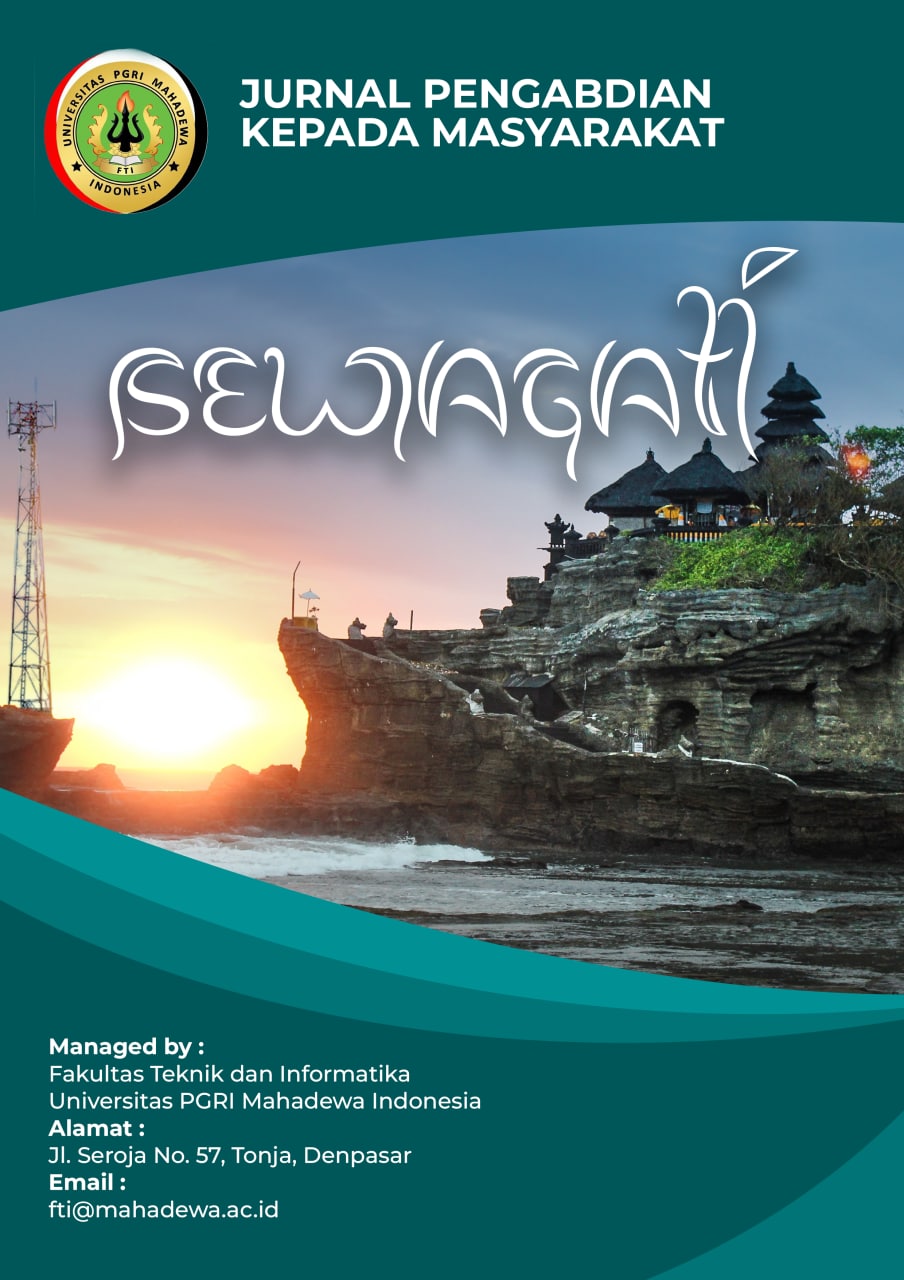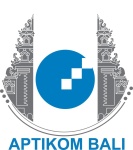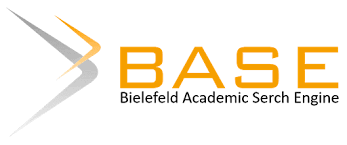REKONSTRUKSI EDUKASI: MELESTARIKAN ALAM PANDAWA MELALUI PENGOLAHAN SAMPAH PLASTIK
DOI:
https://doi.org/10.59819/sewagati.v4i1.5074Keywords:
Plastic, waste, recycling, installation, educational reconstructionAbstract
Plastic waste is an urgent problem that must be addressed immediately. Plastic not only damages the ecosystem, but also threatens human health if not handled properly. As one of the efforts to overcome problems related to plastic waste, the Fine Arts Education study program (PPSR) in collaboration with the Informatics Engineering study program at PGRI Mahadewa University, carries out good activities, namely Community Service (PKM) activities. The activity program carried out is the creation of a plastic recycling installation entitled "Educational Reconstruction" which is present as a creative and educational effort in processing waste. This PKM implementation is in series with the Culture Run Bali 2024 activities, which are organized by Vinda Creative Events at Pandawa Beach. Culture Run is a running activity accompanied by various exciting activities at every kilometer in order to protect the environment and support "zero emissions" in Bali while preserving the cultural beauty of the Island of the Gods to continue to be spread to the wider community in Indonesia. The Plastic Recycling Installation is a work of art as well as educational media related to alternatives in processing plastic waste into environmentally and health-friendly art products.
Downloads
References
Aminudin Dan Nurwad (2019). PEMANFAATAN SAMPAH PLASTIK MENJADI KERAJINAN TANGAN GUNA MENINGKATKAN KREATIFITAS WARGA SEKITAR INSTITUT TEKNOLOGI DAN BISNIS AHMAD DAHLAN (ITB-AD) JAKARTA. Jurnal ABDIMAS BSI Jurnal Pengabdian Pada Masyarakat Vol.2. No. 1Februari.
Arlini, D.R; Jenny C Dan Diyah, K.R. 2017. POTENSI REDUCE, REUSE, RECYCLE (3R) SAMPAH PADA BANK SAMPAH “BANK JUNK FOR SURABAYA CLEAN (BJSC), Jukung Jurnal Teknik Lingkungan. 3(1): 1-11.
JAYA, B. E. SAMPAH PLASTIK SEBAGAI MEDIA KREATIVITAS OLEH SEKA TERUNA BUDHI EKA JAYA.
Manik, Karden Edy Sontag (2016). PENGELOLAAN LINGKUNGAN HIDUP. Jakarta. Penerbit. Prenada Media Grup. Sejati, Kuncoro (2009). PENGELOLAAN SAMPAH TERPADU. Penerbit Kanisius.
Purnamasari, N. P. L., Artajaya, G. S., Sukanadi, I. M., Suandewi, P. A. A., & Pramanawibawa, I. G. N. A. (2023). PENGEMBANGAN KEMAMPUAN MOTORIK HALUS SISWA TK MELALUI PEMBELAJARAN BATIK RAMAH ANAK. Sewagati, 1(2), 94-101.
Purnamasari, N. P. L., Arta, I. K. J., Sukanadi, I. M., Arsana, I. M., & Elvandiah, E. (2023).336 PENGEMBANGAN INDUSTRI KREATIF BATIK MAWAR DI DESA KEDEWATAN UBUD. Sewagati, 1(2), 102-112.
Sirait, Mita (2009). SULAP SAMPAH PLASTIK KERAS JADI JUTAAN RUPIAH. Yogyakarta. B-First
Suanda, I. W., Rai, I. G. A., Purnamasari, N. P. L., Alit, D. M., & Rusmayanthi, K. I. (2023). PENGELOLAAN SAMPAH PLASTIK DAN RT DI KELURAHAN PENATIH KECAMATAN DENPASAR TIMUR MENUJU BIOENTREPRENEUSHIP. Jurnal AKSES, 15(2).
Downloads
Published
Issue
Section
License
Copyright (c) 2025 Ni Putu Laras Purnamasari, I Kadek Juni Arta, Ni Putu Devi Ary Santhi

This work is licensed under a Creative Commons Attribution-ShareAlike 4.0 International License.
Authors who publish with the Jurnal Sewagti agree to the following terms:
1. Authors retain copyright and grant the journal the right of first publication with the work simultaneously licensed under a Creative Commons Attribution License (CC BY-SA 4.0) that allows others to share the work with an acknowledgment of the work's authorship and initial publication in this journal.
2. Authors are able to enter into separate, additional contractual arrangements for the non-exclusive distribution of the journal's published version of the work (e.g., post it to an institutional repository or publish it in a book), with an acknowledgment of its initial publication in this journal.
3. Authors are permitted and encouraged to post their work online (e.g., in institutional repositories or on their website) prior to and during the submission process, as it can lead to productive exchanges, as well as earlier and greater citation of published work. (See The Effect of Open Access) .




















